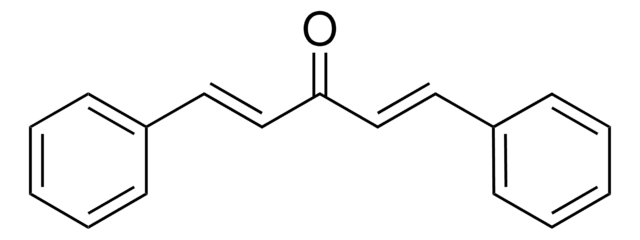Key Documents
About This Item
Polecane produkty
klasa czystości
for molecular biology
Poziom jakości
agency
suitable for SM 4500 - NH3
ciśnienie pary
3 mmHg ( 37 °C)
Postać
liquid
stężenie
5.0 M
pH
14
gęstość
1.327 g/cm3 at 25 °C
temp. przechowywania
room temp
ciąg SMILES
[OH-].[Na+]
InChI
1S/Na.H2O/h;1H2/q+1;/p-1
Klucz InChI
HEMHJVSKTPXQMS-UHFFFAOYSA-M
Szukasz podobnych produktów? Odwiedź Przewodnik dotyczący porównywania produktów
Zastosowanie
- As a base in the reduction of oximes, imines, and hydrazones using Raney nickel.
- In the preparation of trans-1,2-cyclohexanediaminetetraacetic acid standard solution applicable in the synthesis of the ferric chelate complex.
- In the synthesis of radiolabeled quinolinyl analogs for α-synuclein binding assay studies.
Hasło ostrzegawcze
Danger
Zwroty wskazujące rodzaj zagrożenia
Zwroty wskazujące środki ostrożności
Klasyfikacja zagrożeń
Eye Dam. 1 - Met. Corr. 1 - Skin Corr. 1A
Kod klasy składowania
8B - Non-combustible corrosive hazardous materials
Klasa zagrożenia wodnego (WGK)
WGK 1
Temperatura zapłonu (°F)
Not applicable
Temperatura zapłonu (°C)
Not applicable
Certyfikaty analizy (CoA)
Poszukaj Certyfikaty analizy (CoA), wpisując numer partii/serii produktów. Numery serii i partii można znaleźć na etykiecie produktu po słowach „seria” lub „partia”.
Masz już ten produkt?
Dokumenty związane z niedawno zakupionymi produktami zostały zamieszczone w Bibliotece dokumentów.
Klienci oglądali również te produkty
Nasz zespół naukowców ma doświadczenie we wszystkich obszarach badań, w tym w naukach przyrodniczych, materiałoznawstwie, syntezie chemicznej, chromatografii, analityce i wielu innych dziedzinach.
Skontaktuj się z zespołem ds. pomocy technicznej




